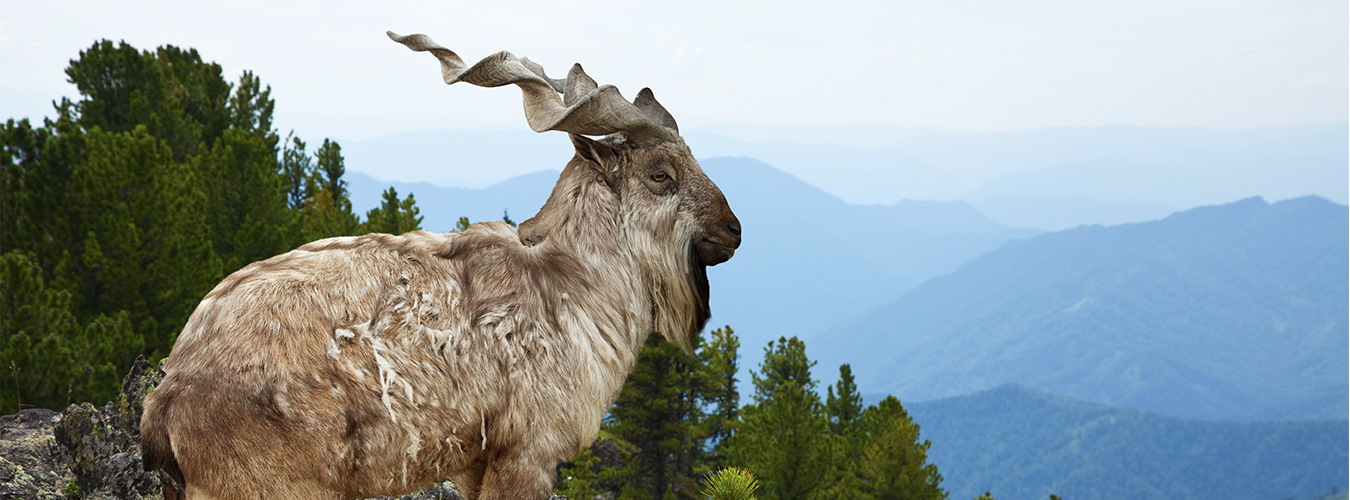Jammu & Kashmir Switch to Hindi
Survival Threat to Markhor
Why in News?
Markhor, the largest wild goat in the world, is battling for survival in Jammu and Kashmir. It is known for its thick fur, flowing beard and corkscrew horns.
Key Points
- Legal Protection and Species Status:
- Markhor, scientifically known as Capra falconeri, is classified as "Near Threatened" by the IUCN and protected under Schedule I of India’s Wildlife Protection Act, 1972.
- Threats to Survival:
- Primary threats include habitat loss from fencing, illegal grazing, poaching, and encroachment. Climate change is also affecting food resources, driving Markhor closer to human settlements.
- Global Recognition and Initiatives:
- Recognizing its ecological importance, the UN General Assembly designated 24th May as the International Day of the Markhor to encourage conservation efforts.
- Significance as a Flagship Species:
- Markhor serves as a flagship species for conservation in J&K, helping protect other regional wildlife, such as Musk Deer and Brown Bear.
- Distribution and Habitat:
- The endangered Markhor inhabits moist to semi-arid mountain regions across Pakistan, India (Jammu & Kashmir), Afghanistan, Uzbekistan, Turkmenistan, and Tajikistan.
- In J&K, it’s found in areas like Shopian, the Pir Panjal range, and Kazinag Uri, but its population is fragmented due to human interference and habitat loss from projects like the Mughal Road.
- Impact of Mughal Road and Conservation Measures:
- The construction of Mughal Road, despite wildlife department opposition, disrupted Markhor habitats.
- Following a Supreme Court directive, 5% of the road’s project cost was allocated for Markhor habitat restoration.
- Markhor Recovery Program:
- Initiated in 2004 by the Wildlife Trust of India (WTI) and the Wildlife Department, the program focuses on fencing sanctuaries, tracking habitat usage, and studying competition between Markhor and livestock.
- Community Involvement and Awareness:
- The Wildlife Department collaborates with Gujjar and Bakerwal herders to educate them on conservation practices, especially in areas with livestock that compete with Markhor for space and resources.
- Government Support and Directives:
- The Forest and Environment Minister recently urged the Wildlife Department to assess the impact of human activities on Markhor habitats, emphasizing soil conservation and afforestation efforts.
- Need for Global Collaboration:
- Conservation efforts call for international expertise and local engagement to boost Markhor populations and preserve this unique species for future generations.










%20MPPCS%202025%20Desktop%20E.jpg)
%20MPPCS%202025%20Mobile%20E%20(1).jpg)



















 PCS Parikshan
PCS Parikshan


